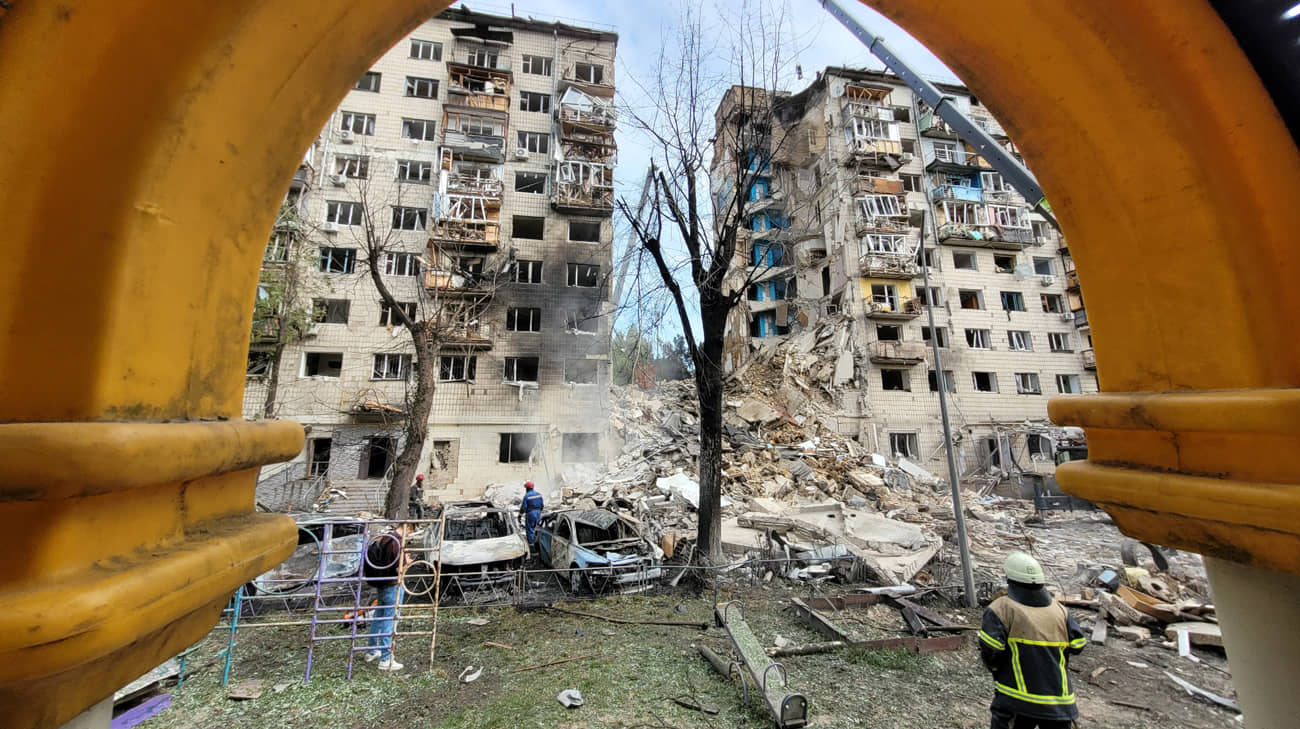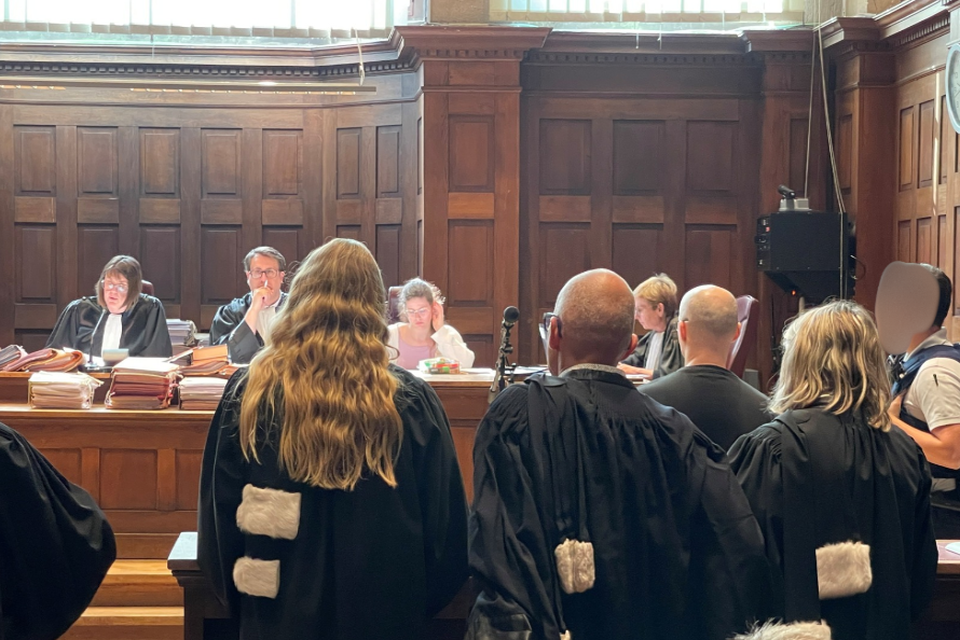‘You are not more unsafe in Dordrecht than anywhere in the Netherlands. But here they do know what to do if things go wrong ‘
/s3/static.nrc.nl/images/gn4/stripped/data129899621-0900f5.jpg|https://images.nrc.nl/1-daupxWsEp8C2P-5rwxdRk-EDw=/1920x/filters:no_upscale()/s3/static.nrc.nl/images/gn4/stripped/data129899621-0900f5.jpg|https://images.nrc.nl/1ggbUi5O-Qfm_SIawMaNnPbUy3A=/5760x/filters:no_upscale()/s3/static.nrc.nl/images/gn4/stripped/data129899621-0900f5.jpg)
It is, says Delta Commissioner Co Verdaas, « a taboo » to say that we can also have to deal with a large flood in a well -protected country like the Netherlands. In addition to the story about how we can prevent flooding, I also try to tell the story about acceptance, learning to live with water, and that it can sometimes go wrong once. In addition, I sometimes get the reproach, in particular from people who have long been busy securing our country, that I suggest that we are really giving up the fight against the water.
That is why the Delta Commissioner, who advises the government on water issues, is today in Dordrecht. Because here they hardly do what happens elsewhere in the Netherlands: talk about what to do in the event of a disaster. « You are in the leading group, » says Verdaas during a walk through the city center with municipal and regional water managers. « Do you not often get the response from the population that it does not want to be reminded of the chance that things can go wrong every day? »
Shopping street is also a dike
That is not too bad, says Ellen Kelder, Water program manager from the municipality of Dordrecht. Because the history of the island of Dordrecht is signed by floods and by lighter forms of flooding with which residents are familiar. Especially in the historic city center. A part of the center is located outside the dikes and another part is protected by the Voorstraat, which is known as the longest shopping street in the Netherlands and also acts as a dike. Unique. If the water rises considerably, it runs through openings at the back of the buildings to the front, to be stopped there by tide – about thirty centimeters high boards that are hung in the facade to prevent worse. A single medium in addition has also raised the floor of his store. « But there are not many, » says Kelder.
/s3/static.nrc.nl/images/gn4/stripped/data129899664-a11fc8.jpg|https://images.nrc.nl/nTKsfE3vbfMRfKfVIG5gIlP1alc=/1920x/filters:no_upscale()/s3/static.nrc.nl/images/gn4/stripped/data129899664-a11fc8.jpg|https://images.nrc.nl/2QzGem1zunAoCT8ZzTn_ukFdNcs=/5760x/filters:no_upscale()/s3/static.nrc.nl/images/gn4/stripped/data129899664-a11fc8.jpg)
The ‘water -retaining function’ of the shopping street is regularly checked by the Hollandse Delta Water Board, so that the chance that the water ends up behind the street is never higher than one to ten thousand. « The height of the flood bulkheads is still sufficient, » says Noor Pruijn, water safety adviser at the water board. « But there will come a moment when that is no longer high enough. » That mainly depends on the extent to which the sea level continues to rise. The Maeslantkering in the Nieuwe Waterweg serves for the protection of Dordrecht, among others. But what if it comes to the end of her lifespan? Pruijn: « Then a complex situation arises. You cannot make the Scots even higher. So you have to discuss with each other whether there are other ways to protect the city center. » There are ideas for, such as the construction of a two -kilometer ‘boulevardkering’, around the city center.
Read also
A journey along the high water: ‘The boundaries of water management are coming in sight’
Fleeing is still possible
One of the most important messages that water managers transfer to the people of Dordrecht about the scenario of a possible disaster: that they can flee. They distribute that message during training sessions at schools and at an annual festival, and with videos about the use of sandbags. Nevertheless, it remains difficult to get away from the island that is Dordrecht in the event of a flood disaster. You have to wait and see whether in that case the Moerdijk Bridge is still available in a southerly direction, and whether the roads north of the city are not overcrowded with people who have fled Rotterdam. But the municipality can flee. Dordrecht is busy shelters to develop; Flights places where evacués can go, for a few days, until the water has dropped again and they can return to their homes.
/s3/static.nrc.nl/images/gn4/stripped/data129899670-e4c3be.jpg|https://images.nrc.nl/8fk3Mqkx04zpQ0qeVgPLIcaRrh0=/1920x/filters:no_upscale()/s3/static.nrc.nl/images/gn4/stripped/data129899670-e4c3be.jpg|https://images.nrc.nl/KFdEh6lhdnHQn-5-ZW5rEg9cvmM=/5760x/filters:no_upscale()/s3/static.nrc.nl/images/gn4/stripped/data129899670-e4c3be.jpg)
For example, in the tail, a neighborhood located outside the dykes that is high enough to offer protection against floods such as dikes that have to protect lower parts of Dordrecht, collapsed. There, in the tail, there is still drinking water and electricity in such a case, and the roads are still passable. A new neighborhood to be built, the Maasterras next to Central Station, four meters high, must also become such a place for tens of thousands of water refugees. Moreover, people who can help collect water refugees in those higher escape neighborhoods. « That is a big advantage, » said Kelder. Incidentally, Dordrecht is exactly where the sea and river come together. « So here the water does not flow quickly. The water goes up and down, that makes it safe, outside the dykes. With every flood you see on the television news, everything is dragged along. That cannot happen here. » And yet, if a protective dike breaks through, this can lead to a catastrophic flood. « But good preparation can limit the number of victims. »
Insecurity
/s3/static.nrc.nl/images/gn4/stripped/data129899679-c669e6.jpg|https://images.nrc.nl/iuYBv5SZB9nmFKND6W7GmCzZi50=/1920x/filters:no_upscale()/s3/static.nrc.nl/images/gn4/stripped/data129899679-c669e6.jpg|https://images.nrc.nl/_-7vApVPXpBc5I_tA1TMUAW6qlA=/5760x/filters:no_upscale()/s3/static.nrc.nl/images/gn4/stripped/data129899679-c669e6.jpg)
The House of Representatives will discuss on Wednesday, among others with Delta Commissioner Verdaas, the costs and the impact of climate change in the Netherlands. The ‘paradox’ of Dutch water management, says Verdaas during his visit to Dordrecht is that you do everything to increase the safety against flooding, but that if you are going to talk about possible floods, there will be a feeling of insecurity. Verdaas: « In Dordrecht you are not more insafe than anywhere in the Netherlands. But unlike in the rest of the Netherlands, they know what to do here if things go wrong once. »
Read also
High water levels and high waves, this mini-oooscheldescheldekering should also be able to resist everything

:format(webp)/s3/static.nrc.nl/images/gn4/stripped/data109835536-8612a9.jpg)
:format(webp)/s3/static.nrc.nl/wp-content/uploads/2025/01/09195748/data126436368-353dec.jpg)
/s3/static.nrc.nl/images/gn4/stripped/data133765929-d429d6.jpg|https://images.nrc.nl/royXSemV2Y87eKTOl1tkgW6FdcI=/1920x/filters:no_upscale()/s3/static.nrc.nl/images/gn4/stripped/data133765929-d429d6.jpg|https://images.nrc.nl/nncQD9VXYa2TzYIl5phcdmU7rYU=/5760x/filters:no_upscale()/s3/static.nrc.nl/images/gn4/stripped/data133765929-d429d6.jpg)
:format(webp)/s3/static.nrc.nl/wp-content/uploads/2025/06/11102856/data133476860-8340d6.jpg)
/s3/static.nrc.nl/wp-content/uploads/2025/06/17083830/web-1706BINbijCBS.jpg)




